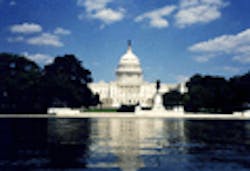Court Rules Against Regulators in Wetlands Cases
A divided Supreme Court stopped short of limiting federal protection of wetlands while ruling Monday that the government overstepped its authority in halting two developments in Michigan.
The court voted 5-4 to set aside lower-court decisions favoring federal regulators in two Michigan cases in a much-anticipated ruling that could bring confusion to federal wetlands regulation but not fundamentally alter the government's approach.
The fractured decision was praised by business groups and property rights advocates.
Environmental advocates breathed a sigh of relief that the first key land-use decision under new Chief Justice John Roberts came up one vote short of potentially opening up many sensitive lands to development.
For his part, Roberts wrote that he was disappointed that the court had not achieved clear agreement on the reach of the Clean Water Act and that "lower courts and regulated entities will now have to feel their way on a case-by-case basis."
The ruling won't clear up much of the confusion that regulations create in Arizona, where many streams, rivers and washes flow only part of the year. Environmental activists fear that loosening the rules could allow builders to disturb an area that carries water only during runoff season or after thunderstorms, allowing pollutants to wind up in rivers or lakes, the activists say.
The same conditions led Arizona home builders and the Central Arizona Project to side with the developers in the case. Officials with those groups say the federal rules force land users to file for permits they might not need, such as a dry wash miles away from one of the state's rivers. The CAP argued that the rules went far beyond what Congress intended.
At issue was whether the federal clean-water regulations apply to wetlands that are not close to rivers and lakes.
The court was so divided that justices provided five opinions. Justice Antonin Scalia wrote of an "immense expansion of federal regulation of land use" under the Clean Water Act.
Federally regulated waters of the United States, Scalia continued, "include storm drains, roadside ditches, ripples of sand in the desert that may contain water once a year."
Source: EPA


